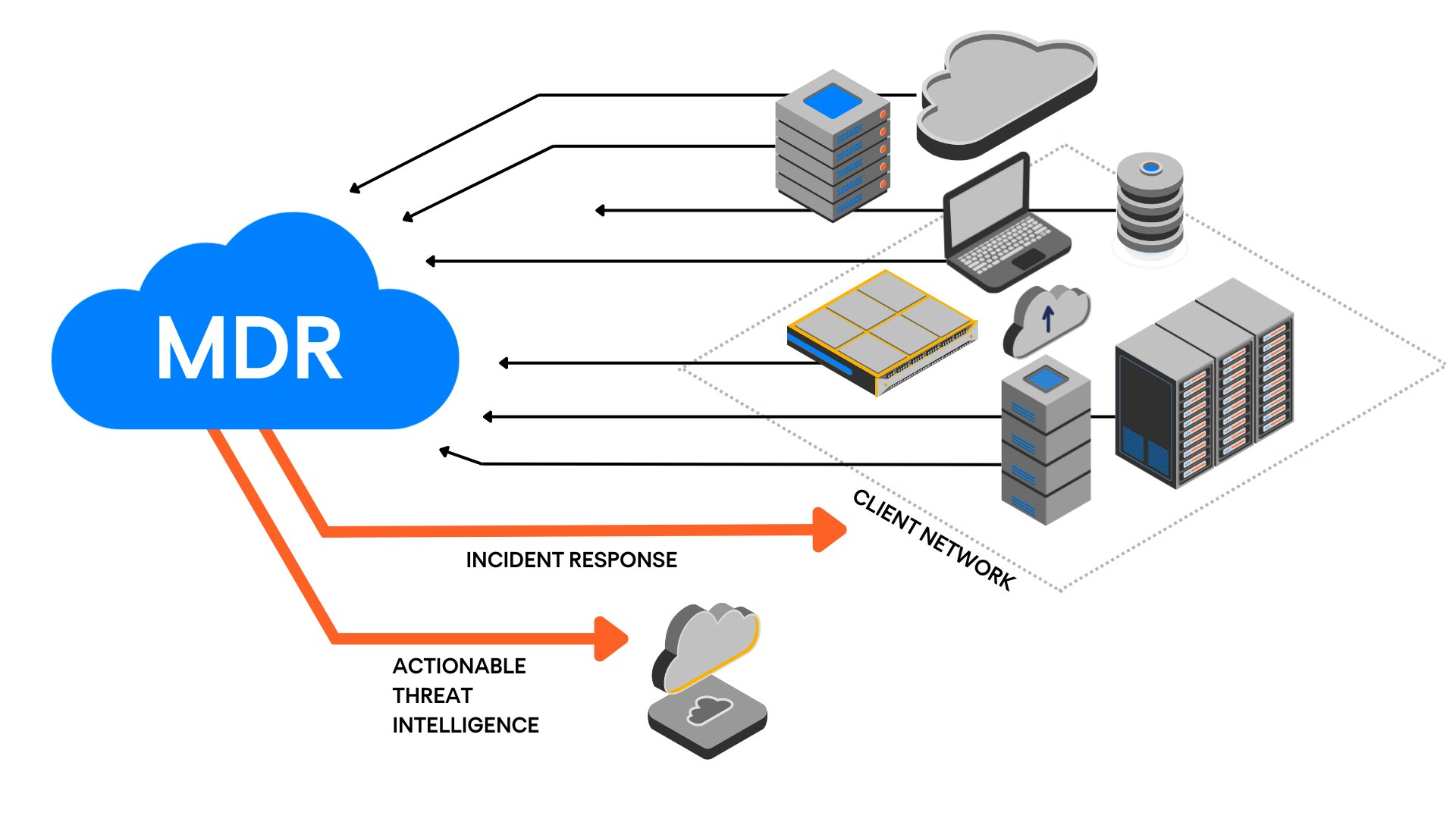In the face of a growing cybersecurity talent gap, many organizations struggle to recruit and retain skilled security professionals. This scarcity has led to a significant number of businesses without dedicated security experts, prompting a shift in strategy towards outsourcing. The complexity of today's cyber threat landscape requires a high level of expertise to manage and monitor advanced security solutions effectively, expertise that is often not available in-house.
To address this issue, many companies opt for Managed Detection and Response (MDR) services. MDR offers a practical solution by providing organizations with external teams that bring specialized knowledge and capabilities, effectively acting as an outsourced SOC. This approach allows companies to benefit from expert-led security operations without the challenges and costs of building and maintaining a full-fledged internal security team. It's a strategic move that aligns with the current IT security climate, where agility and specialized knowledge are key to defending against sophisticated threats.
What is Managed Detection and Response?
MDR is a specialised service that combines technology, processes, and human expertise to monitor, detect, and respond to cyber threats in real-time. Unlike conventional security measures that focus on prevention through barriers such as firewalls and antivirus software, MDR operates on the assumption that breaches can and will occur. Therefore, the aim is to identify and mitigate these breaches swiftly to minimise impact. MDR provides continuous monitoring and comprehensive analysis of security events, ensuring that threats are identified, understood, and countered effectively.
Components of MDR services
As we delve into the Managed Detection and Response (MDR) services components it's crucial to understand that each element plays an important role in creating a strong cybersecurity posture
Continuous monitoring (24/7 monitoring):
Utilising an array of advanced Intrusion Detection Systems (IDS), network behaviour analysis tools and security event management software, these systems continuously patrol the digital corridors of the infrastructure. The mission is to ensure complete visibility and be the first to spot any hint of malicious activity, facilitating early intervention.
Leveraging a comprehensive suite of advanced security technologies, including XSOAR, SIEM, XDR, EDR, and NDR solutions, this ensures continuous surveillance across the entire digital infrastructure. These tools work in coordination to monitor, detect, and analyse network behaviour and security events in real time.
The mission is to maintain complete visibility, promptly identify any indicators of malicious activity, and enable swift intervention to mitigate potential threats before they can impact operations.
Advanced analytics:
Aiming to build a baseline of normal activity across an environment and identify deviations that may indicate malicious behaviour. Tools such as behavioural analysis, heuristic techniques, and machine learning are used to detect anomalies and potential security incidents. Anomalies like lateral movement, unusual access patterns, or data exfiltration are detected, enabling faster and more accurate threat detection.
Threat detection:
Equipped with AI and Machine Learning, MDR services not only relies on known attack patterns, but it raises flags for weird behaviour that deviated from the “normal”. Unexpected data transfers and unusual login times will be detected and reported. This might be concerning as it will generate a large number of alerts, but the AI processes the large amount of data to prioritise most urgent alerts for security teams to address.
Threat intelligence:
Derived from the proactive nature, threat intelligence is best described as the strategic command of MDR. Constant evolution and learning to stay informed on the latest cybersecurity maneuvers. The learning usually relies on data gathered on a global scale from different industries in addition to the latest research. This reinforces the MDR with the ability to identify different sorts of threats and respond to them appropriately.
Incident response:
In MDR, incident response is more efficient and swift. Containment and minimisation of damage comes as top priority. Maintaining normal operations is governed by the speed of response to malicious code as it neutralises it and isolates compromised systems. Those incidents are then used to prevent future assaults.
Compliance and reporting:
Regulations in the cybersecurity landscape are constantly changing and evolving, this mandates the need for solid documentation and reporting practices. Companies that do not abide to such regulations can often find themselves facing serious consequences. Therefore, cybersecurity experts are important to set forth the proper framework for incident documentation and reporting. Additionally, these frameworks facilitate future audits and provide valuable insights for refinements in the security practices.
The human element:
It is reassuring to know that decision makers in MDR are the human cybersecurity experts and analysts. They rely not only on the data, but also expertise and critical thinking to accurately differentiate between genuine and false threats. Incorrectly exaggerating a security event could bring the entire operations of a company to a halt. Similarly, undermining a threat could lead to crisis if left unaddressed or contained.
These components are what makes up the MDR services, and what makes it a highly efficient shield against cyber threats as well as a tool for companies to be able to grow and scale sustainably.
With a robust understanding of the varied components that comprise MDR services, let us now turn our attention to the advanced technologies that empower these capabilities. These technological tools are the very bedrock that strengthens MDR's capacity to anticipate, detect, and respond with speed.
The pillars of MDR services
MDR services utilises different tools such as Endpoint Detection and Response (EDR) to effectively navigate through the complexities of cybersecurity. EDR keeps a watchful eye on the endpoint activities. Moreover, Security Information and Event Management (SIEM) systems serve as the central hubs for gathering and analysing security data across an organisation's landscape.These are the pillars that form the backbone upon which any MDR service is built on. Often these tools are customised to fit each company to ensure that specific objectives are being met.
Envisioning tomorrow
Looking forward, we can only anticipate more automations and innovations in MDR services. Advancements in AI, machine learning and predictive analytics will only reinforce MDR services more, making it a better fit for the future. The human element will need to evolve as well, keeping up with the advancements in the non-human component. Experts will need to understand the intricacies of those systems even more. MDR services will become more crucial and ever more technical as it combats the evolving cyber threats.
The value of MDR in modern cybersecurity
Managed Detection and Response (MDR) summarises the progression of cybersecurity, transitioning from a static defensive posture to a dynamic approach. Adversaries are constantly innovating, MDR's blend of cutting-edge technologies, continuous monitoring, and expert human analysis delivers a comprehensive defence mechanism. This combination not only detects threats more effectively but also responds with speed and precision, offering businesses a level of resilience essential for today's digital threats.
As organisations struggle with the volume and complexity of cyber threats, the strategic adoption of MDR can significantly enhance their defensive capabilities. This service is not an added luxury to security but rather a fundamental shift towards a more adaptable, intelligence-driven security framework that can withstand different challenges.
Learn more about why MDR services are essential to modern cybersecurity efforts.
Take a look our services
Our team is ready for you
Do you want to know more about this topic? Leave a message or your number and we'll call you back. We are looking forward to helping you further.







